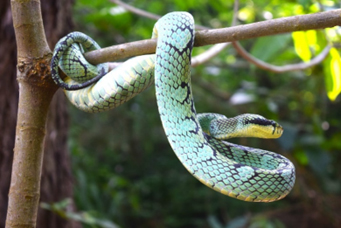Modeling habitat suitability to predict the potential distribution of the Sri Lankan Green Pit Viper
Main Article Content
Abstract
Snake distribution and habitat modeling serve multiple valuable purposes, one of which involves establishing a systematic approach for collecting and assessing data related to the presence and influence of diverse factors on snake distribution patterns. The main objective of this study is to explore the habitat association of the Sri Lankan Green Pit Viper (Peltopelor trigonocephalus) and develop models to assess the suitability of different habitats within the island Sri Lanka. We modeled the suitable habitat for this species using the maximum entropy algorithm, combining presence data collected over two years (from April 2021 to April 2023) with a set of seven environmental variables (annual precipitation, annual mean temperature, precipitation of coldest quarter, elevation, land use, isothermality, Euclidean distance to water). We assessed the importance of different environmental variables through jackknife tests. We evaluated the predictive ability of the models using the area under the receiver operating characteristic curve. We discovered that the primary explanatory variables influencing the distribution of the species were annual mean temperature, annual precipitation, and elevation, contributing significantly at 35%, 31.6%, and 20%, respectively. The Sri Lankan Green pit viper inhabited riparian, forest, and open habitats, with the highest number of individuals recorded in riparian areas. We presented the first habitat suitability models for the Sri Lankan Green Pit Viper, offering valuable insights for conservation biologists and land managers involved in preserving this species.
Article Details

This work is licensed under a Creative Commons Attribution 4.0 International License.
